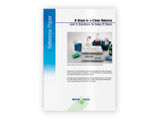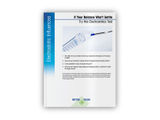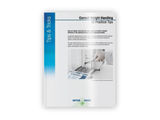To use all functions of this page, please activate cookies in your browser.
my.chemeurope.com
With an accout for my.chemeurope.com you can always see everything at a glance – and you can configure your own website and individual newsletter.
- My watch list
- My saved searches
- My saved topics
- My newsletter
AmicyaninAmicyanin is a type I copper protein that plays an integral role in electron transfer. In bacteria such as Paracoccus denitrificans amicyanin is part of a three member redox complex along with methylamine dehydrogenase (MADH) and cytochrome c-551i. Additional recommended knowledgeFunctionIn the electron transfer mechanism from MADH to heme amicyanin acts as an electron accepting intermediate. In this reaction MADH catalyzes the oxidative deamination of methylamine to formaldehyde plus ammonia. The tryptophan tryptophylquinone (TTQ) group of MADH then donates electrons to the copper center of amicyanin, which in turn gives the electrons to the heme of the cytochrome c. In P. denitrificans amicyanin is absolutely required for electron transfer from MADH to c-type cytochromes. It has been shown inactivation of amicyanin by gene replacement in vivo results in complete loss of ability to grow on methylamine. StructureAs a type I copper protein amicyanin contains one copper atom coordinated by two histidine residues and a cysteine residue in a trigonal planer structure along with an axial methionine residue ligand. Alterations from this particular coordination of the copper center are found to negatively alter the redox potential of amicyanin. In P. denitrificans amicyanin exists in a three part complex along with MADH and cytochrome c-551i. This is the only redox complex comprised of three weakly associated proteins naturally observed. References1. Victor L. Davidson and Limei Hsu Jones, Biochemistry 1996, 35, 8120-8125. Categories: Proteins | Copper compounds | Photosynthesis | Coordination compounds |
| This article is licensed under the GNU Free Documentation License. It uses material from the Wikipedia article "Amicyanin". A list of authors is available in Wikipedia. |







